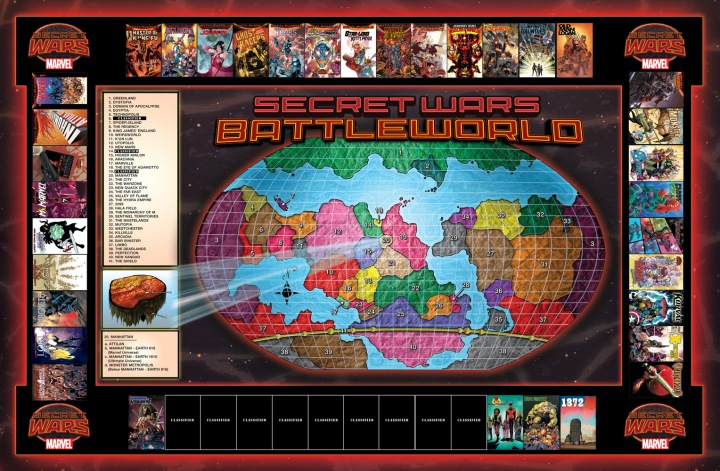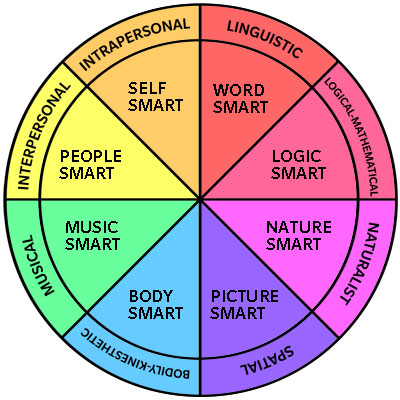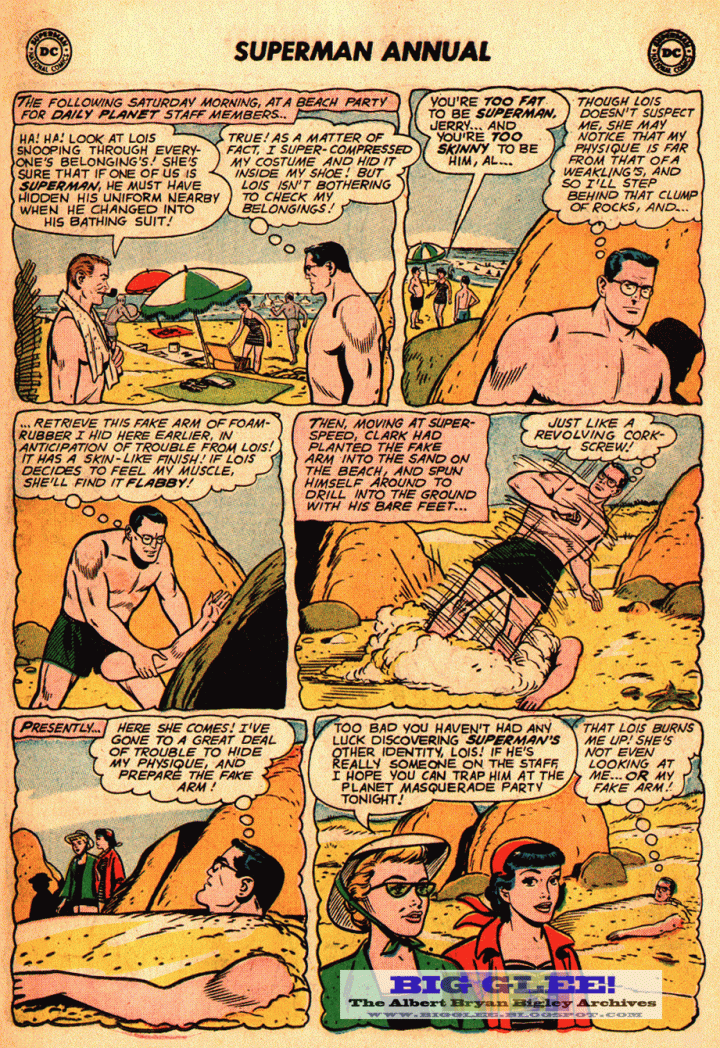Sadly, this entry does not feature one of my favorite superheroes – Jamie Madrox, a.k.a. The Multiple Man. But I’m going to include a picture of him (them) anyway:

On to business!
Warning: Today’s topic contains both intense geekery and buzzword-bashing. Proceed cautiously.
Blockbuster movies are not the only highlight of summer. It’s also the season when comic book publishers launch company-wide crossovers that promise to shake up a universe or two (or 52).
Marvel Comics and DC Comics have both blasted readers with major events this year. DC recently ran through a “Convergence” that ended with every version of its universe (pre-Crisis, pre-Zero Hour, pre-Flashpoint, etc.) returning to existence. That means every crazy version of familiar heroes and villains can appear in some form or another in one of several alternate universes, or multiverses.

Confused? Check the hyperlinks above to read more about DC’s habit of rewriting history in their comic books (“reboots”). And you can read more here and here, then impress your friends with a mindful of multiversity.
Reboots are Made for Walking . . .
DC rebooting its universe(s) is nothing new. But Marvel Comics has always prided itself on maintaining a single continuity in its main universe (called “Earth-616,” and don’t ask why).
That’s all changed this summer, though, with Marvel’s tentpole production “Secret Wars.” If that name sounds familiar, the original “Secret Wars” (1984) was Marvel’s first mega-crossover teaming up all of its major heroes – Spider-Man, the Avengers, Fantastic Four, the X-Men, and more. Plus, it’s where Spidey got himself his snazzy black costume that . . . didn’t end well.


In Marvel’s current 21st century crossover, every alternate universe (technically not the same as a multiverse; trust me) is starting to shmoosh into each other, with Earth as the epicenter.
What results is a hodgepodge of alternative Marvel Earths mish-mashed all on one planet. This subsequent world is called “Battleworld,” where apparently assorted Marvel heroes and variations duke it out over land rights.

Actually, all of the post-Secret War/Battleworld comics look to be an excuse to revisit everyone’s favorite character or event from Marvel’s storied history. This nostalgia trip won’t last for long, with a finale that will “be the end of the Marvel Universe as we know it!”
Just recently, Marvel has already given us sneak peeks at characters appearing in this “All-New, All-Different” universe. Here’s a look:

Who knows how long either of these nascent realities will last? In recent history, world-shattering moments seem to happen every other issue.
But, hey, it’s comic books.
My concern is not a glut of mega-crossover mini-series, but rather the stampede of super-heroes – namely different versions of the same ones. Take a gander at another Marvel “All-New, All-Different” lineup:

I count two Spider-Men, two Spider-Women (one is “Spider-Gwen”), and two Captain Americas (one is old Steve Rogers, the other the old Falcon). Look back at the first Marvel promo and find two Wolverines (one female, the other old Logan).
Duplicating heroes is one way to increase diversity. But it can sometimes dilute the specialness of super-heroes. I’m not just talking about spreading thin unique super-powers, but also decreasing high-stakes adventures. If a certain hero is facing life-and-death odds, it’s no big deal, since a copycat can fill any vacancy. And if your world blows up, just hop over to the next universe.
Right, DC?

Okay. Rant over.
All-New, All-Different Rant.
Let’s talk about teaching and blow up some more multiplicity problems. “Multiple Intelligences,” to be precise.
Multiple intelligences is perhaps the most touted idea in education today. But in case you haven’t heard of it, here’s a recap:

Back in 1983 (one year before Marvel’s first “Secret Wars”), Harvard professor Howard Gardner argued that a general intelligence (“IQ”) measure is insufficient, and proposed seven different “intelligences” one could possess.

Most people have strengths and weaknesses around this pie, and are more comfortable in some categories (or combos) than in others.
Of course everyone has different strengths. They’re called talents. Skills. Natural abilities. Preferences. Interests. Comfort zones.
But Gardner labeled these categories “intelligences” and this notion took off like honey nut hotcakes. In fact, Gardner has admitted that his ideas wouldn’t have gotten so popular had he just called them “multiple talents.”
So what’s the problem?
Many educators – many with the best of intentions – latch onto “multiple intelligences” thinking they have to cater to everyone’s needs. Taken to the extreme, each topic to be learned requires eight different lessons or activities. That way you cover all the bases.
Another term that overlaps with multiple intelligences is “learning styles.” Educators frequently pigeonhole different students according to a specific strength or preference – visual, auditory, kinesthetic. Worse, students may self-label or assume the identity they’ve been assigned, with the notion that they are stuck in one role with no opportunity to grow or change.
To his credit, Howard Gardner has explained how his ideas of multiple intelligences are NOT the same as learning styles. This is helpful, as comprehensive learning relies on much more than just “style.” Moreover, research has found little evidence that matching teaching to a specific learning preference produces higher understanding. Unfortunately, such clarification is lost among the bulk of educational professionals and publications.
Mixed up reliance on “MI” and “learning styles” enables teachers, parents, and students who want excuses for an underwhelming performance. If Billy flunks his spelling test, that’s okay. Maybe he’s just a “kinesthetic” learner. Maybe he can form letters with his arms and legs. Or if Suzie struggles in math, just have her sing out her calculations. She does so well in choir, after all. She must be “music smart.”
Here’s another problem: Some of these “intelligences” are more practical in everyday life than others. No matter how much you plead, no one will sing the ballot to you the next election day. You have to read to vote. The next time you get pulled over for texting while driving, try explaining to the officer that you have interpersonal intelligence. See how far that gets you.
I’m not saying we should dismiss any student who doesn’t excel at a particular subject or skill. Celebrate their strengths. Find ways for them to use and share that talent. But don’t compromise content learning. And help people shore up their weaknesses.
By the way, for those who counted the Multiple Intelligences in that pie graphic up there (all you logical-mathematical studs), there are actually EIGHT intelligences. Gardner added “naturalistic intelligence” a few years later. And then there’s also “existential intelligence.” It’s all getting a little ridiculous, to the point where The Onion featured a parody article revealing the trials of students with “nasal intelligence.”

A nasal learner struggles with an odorless textbook.
So what should teachers do?
Dr. Gardner suggests three actions: 1. Individualize your teaching; 2. Plurarlize your teaching; and 3. Drop the term “styles.” (Easy for him to say.)
If you want more concrete ideas, here are some quotes from reviews of the research:
From The Chronicle: “Teachers should worry about matching their instruction to the content they are teaching. Some concepts are best taught through hands-on work, some are best taught through lectures, and some are best taught through group discussions” (Glenn, 2009).
From the NSTA: “Using appropriate representations that carefully consider how to best convey the content is important. In addition, we need to scaffold between concrete and more abstract representations, being sensitive to the abilities of our students to handle abstractions. Finally, when students struggle to understand, we need to look at both the nature of the content as well as the prior experiences of our students” (Olson, 2006).
This is a good start to wise planning and teaching. Click on the hyperlinked articles above for more in-depth reading and reflection.
Multiple intelligences – like multiple superheroes – can have some merit in the right context. But both can explode out of control and become gimmicky. Be wary of too much reliance and redundancy, resulting in loss of impact.















